The Southern Reedbuck, scientifically known as Redunca arundinum, is a captivating antelope species found in the grasslands and wetland areas of southern Africa. With its elegant appearance, specialized adaptations, and unique behaviors, the Southern Reedbuck stands out as an intriguing inhabitant of the African savannah.
Southern reedbucks are well adapted to their wetland habitats and have long, slender legs that allow them to navigate through tall grasses and marshy areas. They are known for their distinctive whistling alarm call and are important prey species for predators such as lions and hyenas. Southern reedbucks are found in various parts of southern and eastern Africa, including countries like South Africa, Zimbabwe, and Mozambique.
Southern Reedbuck: Species Profile
COMMON NAME: Southern Reedbuck
SWAHILI NAME: Paa Kusini
SCIENTIFIC NAME: Redunca arundinum
TYPE: Mammal
FOOD: Southern reedbucks are herbivores, primarily feeding on grasses, sedges, and other plant species. They are selective grazers and browsers, preferring young, tender vegetation.
HABITAT: Southern reedbucks inhabit wetlands, grasslands, and savannas near water sources such as rivers, lakes, and marshes. They are often found in areas with tall grass and dense vegetation.
SIZE: Adult southern reedbucks stand about 80-90 centimeters (31-35 inches) at the shoulder. They have a body length of approximately 120-150 centimeters (47-59 inches).
AVERAGE LIFE SPAN IN THE NATURAL HABITAT: In the wild, southern reedbucks have an average lifespan of around 10-12 years.
ACTIVE: Southern reedbucks are primarily active during the early morning and late afternoon, known as crepuscular animals. They rest and seek shade during the hottest parts of the day.
GESTATION PERIOD: The gestation period of southern reedbucks lasts for approximately 6-7 months. After this period, a single calf is born, and it remains hidden in vegetation for protection.
WEIGHT: Adult southern reedbucks weigh around 40-60 kilograms (88-132 pounds). Males are typically larger and heavier than females.
SIZE COMPARISON TO A 6-FT MAN: Southern reedbucks are smaller in size compared to a 6-ft man. They have a slender build with a light to reddish-brown coat. Males have curved, lyre-shaped horns that can reach lengths of up to 40-50 centimeters (16-20 inches).
Physical Features and Adaptations:
The Southern Reedbuck is a medium-sized antelope with a slender and graceful build. It possesses a reddish-brown to grayish-brown coat, which helps it blend seamlessly into its grassland environment. Both males and females have straight, ridged horns that are longer in males and shorter or absent in females. Additionally, the Southern Reedbuck has large, rounded ears and a distinctive white patch on its throat, which further adds to its visual appeal.
Southern Reedbuck Appearance
The Southern Reedbuck (Redunca arundinum) is a medium-sized antelope species found in various parts of Africa, including Tanzania. Here are some key features of their appearance:
- Size: Southern Reedbucks are relatively large antelopes, with males being slightly larger than females. Males typically measure around 100-120 centimeters (39-47 inches) at the shoulder, while females are slightly smaller.
- Coat: They have a short, dense coat that varies in coloration. The upper body is usually reddish-brown or grayish-brown, while the underparts are lighter in color. This coloration helps them blend with their natural habitat.
- White Markings: Southern Reedbucks have distinct white markings on their face and throat. They typically have a white ring around their eyes, a white patch on their cheeks, and a white throat.
- Horns: Both males and females have horns, although the horns of males are generally larger and more robust. The horns are long and curved backward, with prominent ridges along their length.
- Ears: Southern Reedbucks have large, rounded ears that are highly sensitive to sounds, allowing them to detect potential threats in their environment.
- Body Shape: They have a slender body with long, slender legs, which are well-adapted for running and navigating through the dense vegetation of their habitat.
Habitat and Distribution:
Southern Reedbucks are primarily found in the grasslands and wetland areas of southern Africa, including countries such as South Africa, Botswana, Namibia, and Zimbabwe. They thrive in habitats characterized by tall grasses, reeds, and open savannahs with access to water sources. These environments provide the necessary resources for their survival, including suitable forage and protective cover.
Behavior and Social Structure:
The Southern Reedbuck (Redunca arundinum) is a fascinating antelope species known for its unique behavior patterns. Here are some key aspects of their behavior:
- Social Structure: Southern Reedbucks are primarily solitary animals, although they may form small groups consisting of a male, a female, and their offspring. These groups are temporary and tend to disband once the offspring reach maturity.
- Territoriality: Males are highly territorial and mark their territory using scent glands located on their face, legs, and hooves. They defend their territories through vocalizations and physical displays, such as standing tall and parallel walking.
- Communication: Southern Reedbucks use a variety of vocalizations to communicate with each other. These include alarm calls to warn others of potential danger and low grunts during mating rituals.
- Grazing Patterns: Southern Reedbucks are predominantly grazers, feeding on grasses and other herbaceous plants. They are most active during the early morning and late afternoon, avoiding the hotter hours of the day.
- Water Dependency: These antelopes have a strong dependence on water and are often found near wetland areas, marshes, or rivers. They will regularly visit watering holes to quench their thirst and fulfill their water requirements.
- Alertness: Southern Reedbucks are vigilant animals and have excellent senses of hearing and vision. They are quick to detect potential threats and can swiftly escape into the safety of dense vegetation if necessary.
- Parental Care: Females give birth to a single calf after a gestation period of around seven months. The mother hides the newborn calf in dense vegetation, visiting it regularly to nurse and care for it. The calf remains hidden for several weeks until it is strong enough to follow its mother.
Mating Behavior:
During the breeding season, males compete for access to females. They engage in impressive displays of strength and agility, including chasing rivals, locking horns, and pushing contests.
Solitary or Small Groups:
Southern Reedbucks are typically solitary animals or are found in small, loose-knit groups consisting of females, their offspring, and sometimes young males. They have well-defined territories, and individuals communicate through a variety of vocalizations, including snorts and whistles, to maintain social boundaries.
Grazing and Vigilance:
Southern Reedbucks are primarily grazers, feeding on a variety of grasses, herbs, and young shoots. Their elongated muzzle and specialized dentition enable them to efficiently browse on these plant materials. While feeding, they remain vigilant and adopt a vigilant stance, standing on their hind legs with their head and neck erect, enabling them to scan their surroundings for potential threats.
Conservation Status and Efforts:
The Southern Reedbuck is currently classified as a species of “Least Concern” on the International Union for Conservation of Nature (IUCN) Red List. However, localized declines can occur due to habitat loss, human encroachment, and hunting. Conservation efforts focus on preserving their grassland habitats, mitigating human-wildlife conflicts, and implementing sustainable land management practices to ensure the long-term survival of this beautiful antelope.
Redunca arundinum
The Redunca arundinum (Southern Reedbuck’s) elegance, specialized adaptations, and unique behaviors make it a captivating species in the grasslands of southern Africa. Its ability to thrive in these diverse habitats demonstrates the resilience and adaptability of wildlife in the face of environmental challenges. By promoting conservation efforts, sustainable land management, and responsible tourism practices, we can contribute to the preservation of the Southern Reedbuck and the protection of the rich biodiversity of the African grasslands.
Mountain Reedbuck Adaptations
The Mountain Reedbuck (Redunca fulvorufula) is a remarkable antelope species that has evolved several adaptations to thrive in its mountainous habitat. These adaptations enable them to navigate the challenging terrain, find food, and avoid predators. Here are some notable adaptations of the Mountain Reedbuck:
1. Surefootedness: Mountain Reedbucks have adapted to live in steep and rocky environments. They possess strong and nimble legs, allowing them to traverse uneven terrain with ease. Their hooves have a hard outer layer and a soft inner core, which provides stability and grip on rocky surfaces.
2. Camouflage: The coat of the Mountain Reedbuck is perfectly suited for blending into its surroundings. The grayish-brown to reddish-brown coloration of their fur helps them to remain inconspicuous among the rocks and grasses of their habitat. This camouflage provides them with a natural advantage when it comes to avoiding detection by predators.
3. Efficient Grazers: Mountain Reedbucks are adapted to feed on grasses and other vegetation found in their habitat. They have specialized incisor teeth that enable them to crop and chew vegetation more efficiently. This adaptation allows them to extract maximum nutrients from the plant material available, ensuring their survival in the mountainous ecosystem.
4. Acute Senses: To detect potential threats, Mountain Reedbucks have developed keen senses. Their large, round eyes provide excellent vision, allowing them to spot predators from a distance. They also have well-developed hearing, which helps them detect any signs of danger, such as the approach of predators or alarm calls from other animals.
5. Agility and Speed: Mountain Reedbucks possess a lean and agile body structure, which enables them to swiftly navigate through their rugged habitat. They are capable of making impressive leaps and bounds when evading predators or moving across uneven terrain. Their ability to change direction quickly helps them to escape from potential threats effectively.
6. Scent-marking Behavior: Mountain Reedbucks have scent glands located on their face, which they use to mark their territory. By rubbing their scent glands on rocks or vegetation, they leave behind chemical signals that communicate their presence to other individuals. This behavior helps establish and maintain their territorial boundaries.
These adaptations showcase the Mountain Reedbuck’s remarkable ability to survive in its mountainous habitat. Their surefootedness, camouflage, efficient grazing, acute senses, agility, speed, and scent-marking behavior all contribute to their successful adaptation to their challenging environment.
Where to See Southern Reedbucks in Tanzania
Southern Reedbucks (Redunca arundinum) can be found in various regions of Tanzania, primarily in grassland and wetland habitats. Here are some of the best locations to spot these fascinating antelopes:
- Selous Game Reserve:
Located in southern Tanzania, Selous Game Reserve is one of the largest protected areas in Africa. Its diverse landscape, which includes grassy plains, woodlands, and wetlands, provides an ideal habitat for Southern Reedbucks. The reserve offers opportunities for game drives and walking safaris to observe these graceful animals. - Ruaha National Park:
Situated in central Tanzania, Ruaha National Park is renowned for its rich biodiversity and rugged wilderness. The park features a mix of open plains, savannahs, and riverine forests, creating a favorable environment for Southern Reedbucks. Game drives in Ruaha present excellent chances to encounter these antelopes in their natural habitat. - Katavi National Park:
Located in the western part of Tanzania, Katavi National Park is a remote and less-visited wilderness area known for its untouched beauty. The park is characterized by vast grassy plains, seasonal floodplains, and woodland areas, offering a suitable home for Southern Reedbucks. Exploring Katavi on game drives or walking safaris may reward you with sightings of these elusive antelopes. - Mikumi National Park:
Situated in the eastern part of Tanzania, Mikumi National Park is easily accessible from Dar es Salaam, making it a popular destination for wildlife enthusiasts. The park’s open grasslands and acacia woodlands provide an ideal habitat for Southern Reedbucks, among other wildlife species. Game drives in Mikumi offer opportunities to spot these antelopes roaming the plains. - Saadani National Park:
Located along Tanzania’s coast, Saadani National Park is unique as it combines both terrestrial and marine ecosystems. The park features grassy plains, coastal forests, and mangrove swamps, creating a diverse habitat that supports a variety of wildlife, including Southern Reedbucks. Exploring the park on game drives or boat safaris may yield sightings of these antelopes near water sources.
Remember, wildlife sightings are not guaranteed, as animals move freely in their natural habitats. It is advisable to consult with local guides or safari operators who have up-to-date information on Southern Reedbuck sightings and can help plan your visit accordingly.
Southern Reedbuck Safari Tips
If you’re planning a safari to observe the beautiful Southern Reedbucks (Redunca arundinum) in Tanzania, here are some useful tips to enhance your wildlife viewing experience:
Choose the Right Time:
The best time to spot Southern Reedbucks is during the dry season, from June to October, when vegetation is less dense, and animals gather around water sources. Plan your safari accordingly to increase your chances of encountering these antelopes.
Early Morning and Late Afternoon:
Southern Reedbucks are most active during the cooler parts of the day, early morning and late afternoon. Schedule your game drives or walking safaris during these times when wildlife is more active and the lighting conditions are ideal for photography.
Opt for Guided Safaris:
Hiring a professional guide or joining a guided safari tour is highly recommended. Experienced guides are knowledgeable about the behavior and habitats of Southern Reedbucks, and they can take you to the best locations for sightings. They will also ensure your safety during the safari.
Be Patient and Observant:
Wildlife sightings require patience and keen observation skills. Southern Reedbucks are known to be relatively shy and cautious, so it may take some time to spot them. Keep a watchful eye on the grassy plains, wetlands, and areas near water sources where they typically feed and drink.
Stay Quiet and Respectful:
When encountering Southern Reedbucks, maintain a respectful distance and avoid making sudden movements or loud noises. This will minimize disturbance and allow you to observe their natural behavior. Remember, wildlife should always be observed with a responsible and ethical approach.
Pack Essential Safari Gear:
Prepare for your Southern Reedbuck safari by packing essential gear such as binoculars, a camera with a telephoto lens, sunscreen, a hat, insect repellent, and comfortable clothing and footwear suitable for the African bush.
Follow Park Rules and Regulations:
When visiting national parks or reserves, adhere to the rules and regulations set by the authorities. This includes staying on designated paths, not littering, and respecting the natural environment and wildlife.
Learn from Knowledgeable Guides:
Take the opportunity to learn from your guides about the ecology, behavior, and adaptations of Southern Reedbucks. They can provide valuable insights and interesting facts about these remarkable antelopes.
Remember, wildlife encounters are unpredictable, and sightings cannot be guaranteed. The key to a successful safari is to enjoy the overall experience of being in the wilderness and appreciating the natural beauty of Tanzania’s wildlife.
Frequently Asked Questions about Southern Reedbucks
Q: What is a Southern Reedbuck?
A: The Southern Reedbuck (Redunca arundinum) is a medium-sized antelope species found in parts of Southern and Eastern Africa, including Tanzania. They are known for their distinctive appearance and habitat preference.
Q: How can I identify a Southern Reedbuck?
A: Southern Reedbucks have a compact body with a reddish-brown to grayish-brown coat. They have a white underbelly, a white throat patch, and a short, erect mane on their neck. Both males and females have straight, ridged horns that are longer and more pronounced in males.
Q: What is the habitat of Southern Reedbucks?
A: Southern Reedbucks primarily inhabit grassy plains, wetlands, and areas near water sources such as rivers, marshes, and lakes. They have a preference for areas with dense vegetation, including reed beds and tall grasses.
Q: Are Southern Reedbucks social animals?
A: Southern Reedbucks are generally solitary animals, although they may be seen in small family groups consisting of a male, a female, and their offspring. Males are territorial and mark their territory with scent markings and visual displays.
Q: What do Southern Reedbucks eat?
A: Southern Reedbucks are herbivores and primarily feed on grasses, reeds, and other herbaceous plants. They have adapted to their habitat by having long, slender legs and flexible neck, which allows them to graze in tall grasses.
Q: Are Southern Reedbucks endangered?
A: Southern Reedbucks are currently classified as a species of “Least Concern” by the International Union for Conservation of Nature (IUCN). However, habitat loss and degradation pose threats to their population in certain regions.
Q: Can Southern Reedbucks swim?
A: Yes, Southern Reedbucks are capable swimmers. They may enter water bodies to escape predators or to access areas with abundant food resources.
Q: Do Southern Reedbucks migrate?
A: Southern Reedbucks are not known to undertake long-distance migrations. However, they may move within their home range in search of food and water, especially during the dry season.
Q: Are Southern Reedbucks active during the day or night?
A: Southern Reedbucks are primarily diurnal animals, meaning they are active during the daytime. They are most active during the early morning and late afternoon.
Q: Can Southern Reedbucks jump fences?
A: Southern Reedbucks are agile and can jump over low obstacles or fences when necessary. However, their ability to jump may vary depending on the individual and the height of the obstacle.

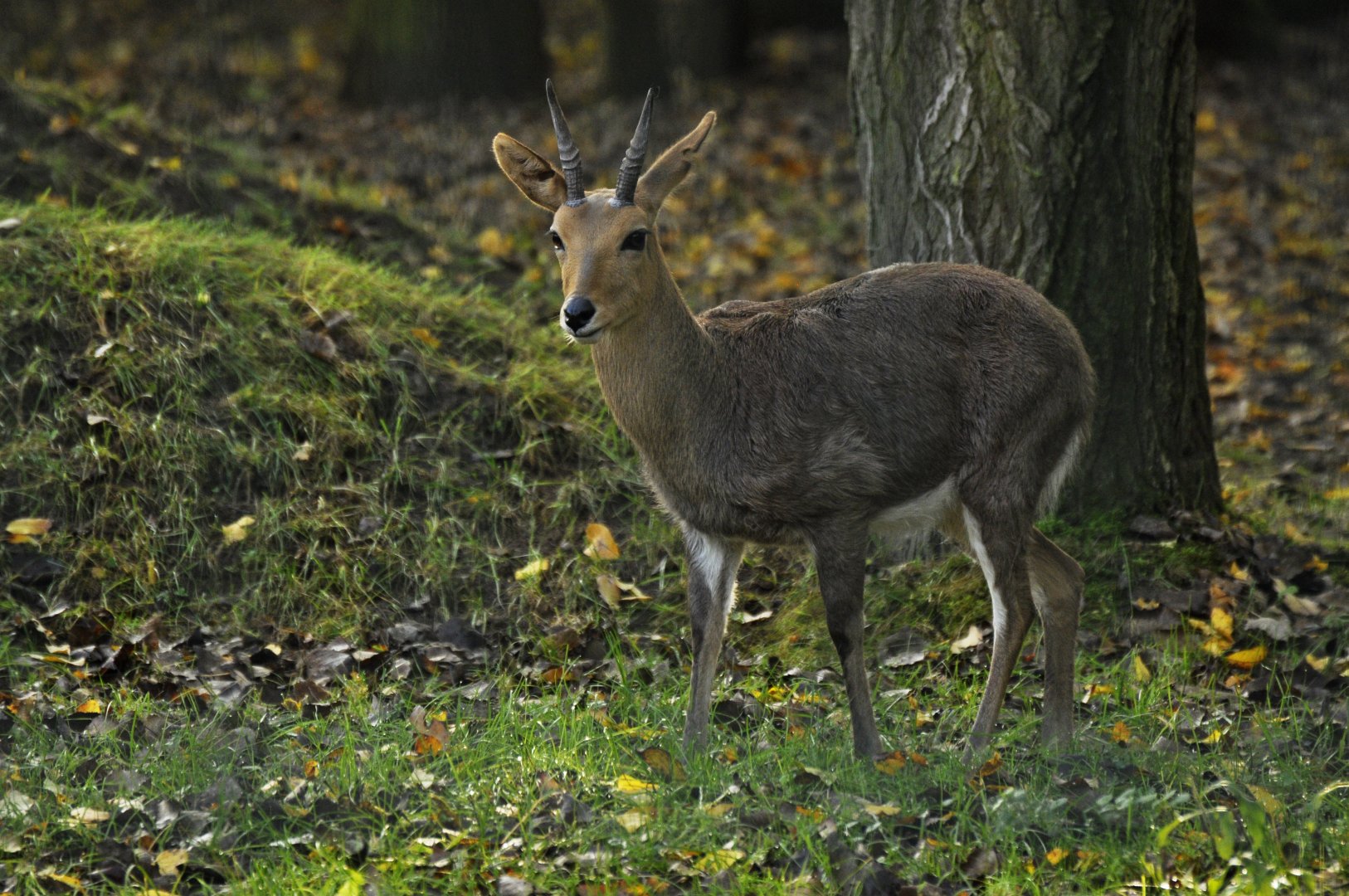
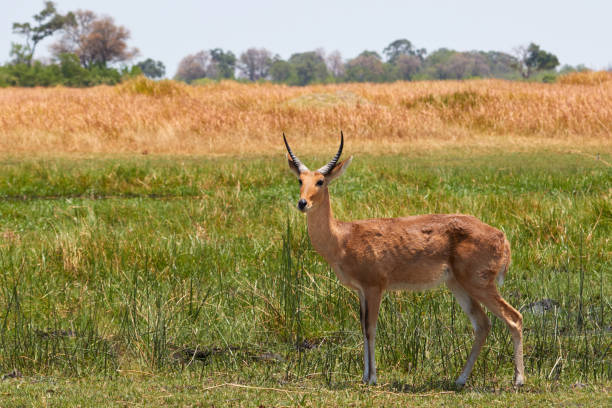
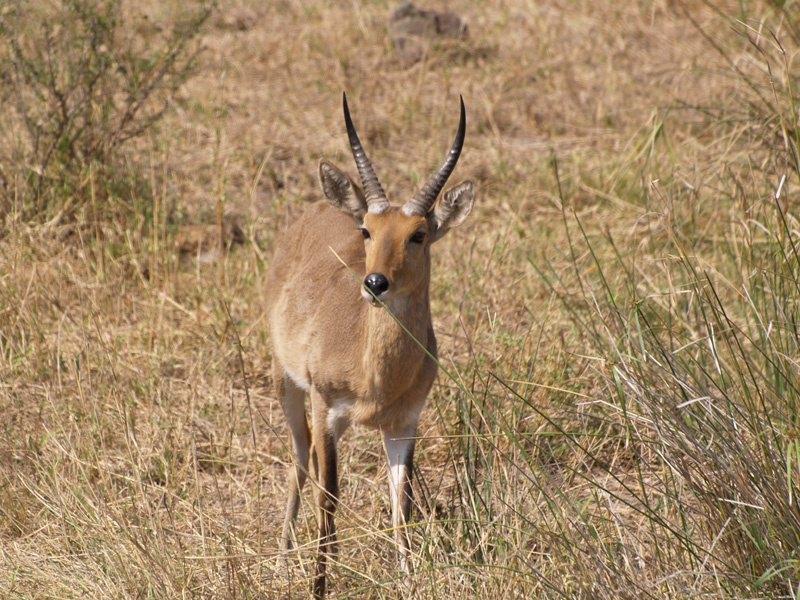
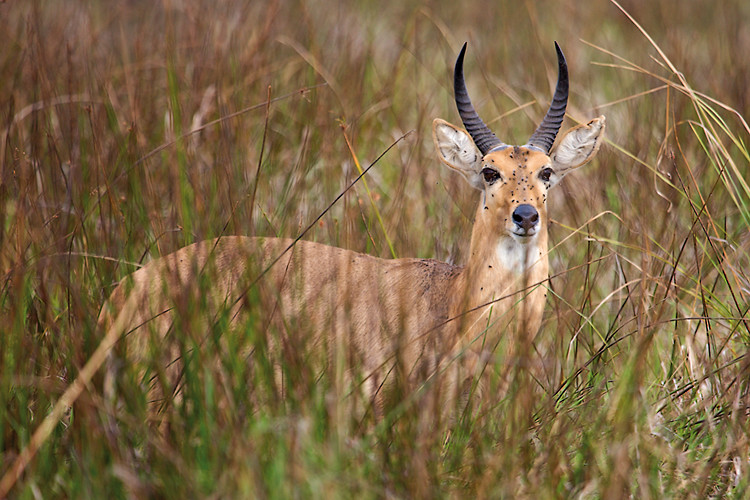
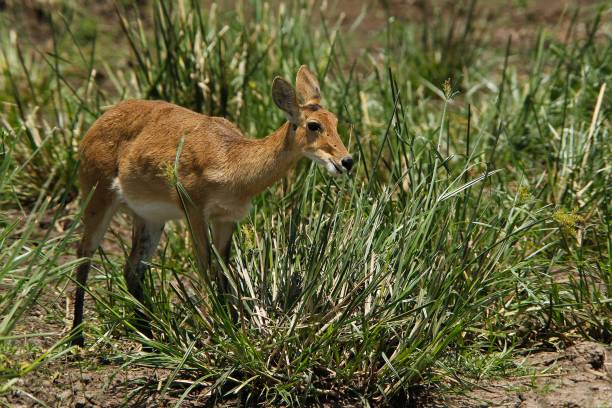
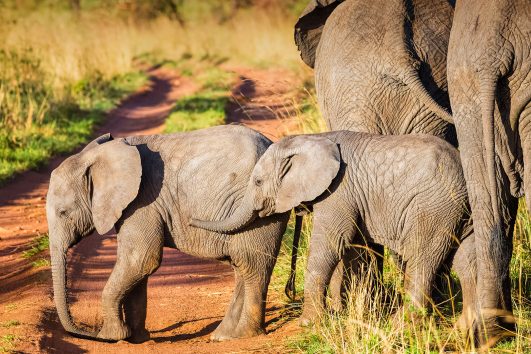
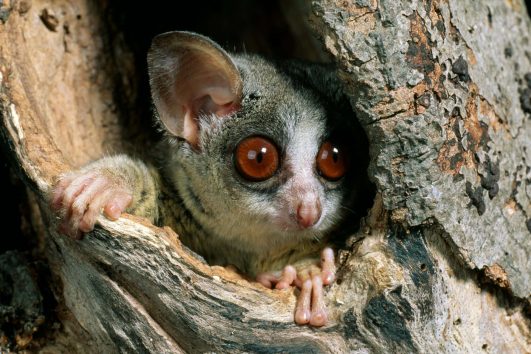
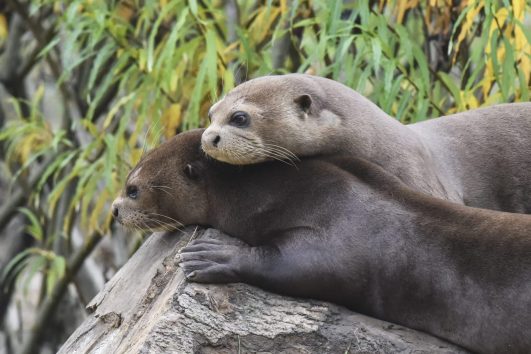
Tour Reviews
There are no reviews yet.
Leave a Review